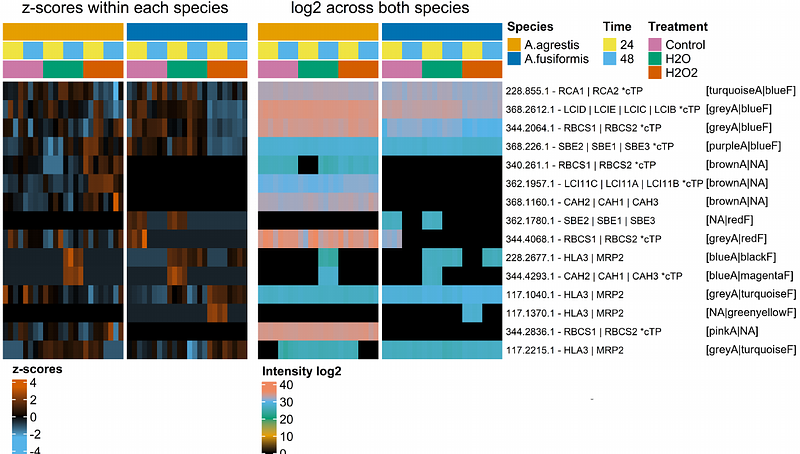Submersion and oxidative stress triggers pyrenoid formation, carbon concentration-related protein remodeling and sub-plastidial rearrangements in hornworts

Submersion and oxidative stress triggers pyrenoid formation, carbon concentration-related protein remodeling and sub-plastidial rearrangements in hornworts
Noetzold, S. I.; Hawat, S.; Stach, T.; Ruaud, S.; Szoevenyi, P.; Hippler, M.; Wicke, S.
AbstractPlastids are important for controlling acclimation of plants to environmental changes. In hornworts, chloroplasts may contain a RuBisCO-enriched protein matrix, a pyrenoid-like structure, which enables them to perform a biophysical carbon concentration mechanism (CCM) at the single-cell level - a unique feature among land plants. However, much remains unknown about the function, formation, and regulation of hornwort pyrenoids, especially as they are unaffected by changes in atmospheric CO2. Here, we tested whether submersion and hyperoxia induce pyrenoid formation and CCM. By subjecting Anthoceros agrestis, a pyrenoid-forming hornwort species, and A. fusiformis, which develops no pyrenoids, to a series of submersion experiments and analyzing their molecular, physiological, and cell-morphological response patterns using label-free proteomics and transmission electron microscopy, with additional in silico analysis, we identified a core set of CCM candidate genes. Under submersion, both species expressed CCM-associated protein homologs, whereas hyperoxia induced or diminished the expression of CCM-like homologs in a species-specific manner. We discovered that a carbonic anhydrase, a CAH3 homolog, as well as thylakoid bicarbonate transporter (LCI11-like) are upregulated under both conditions in A. agrestis, but not in A. fusiformis, suggesting that an algae-like mechanism of bicarbonate pumping into the thylakoid lumen and CO2 conversion exists in A. agrestis. Corroborating these molecular findings, an ultrastructural analysis of plastids revealed increases in pyrenoid-like structures and rearrangements during submersion in A. agrestis, whereas A. fusiformis accumulated lipid droplets between thylakoid stacks. Together, our data highlight hornworts\' distinct acclimation strategies to adverse environmental conditions, highlighting the relevance of their pyrenoids and CCM.